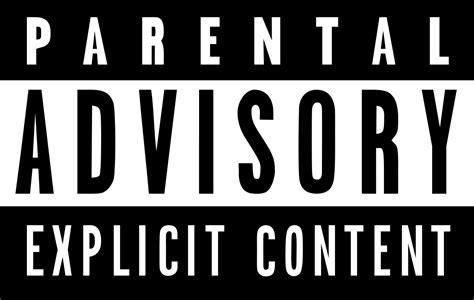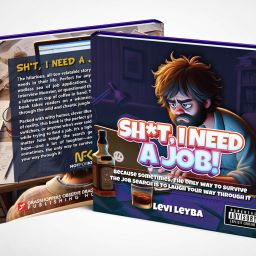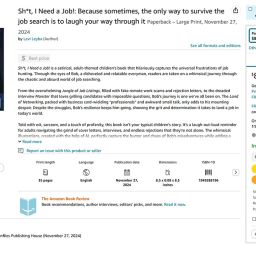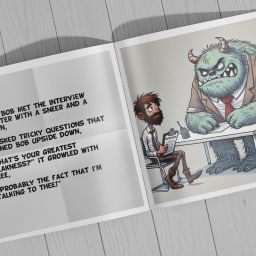Welcome to the first post in our series on creating and publishing your very own illustrated book. I wanted to make this journey a fun one so I opted to create an adult-themed children’s book I have coined as a Not For Kids (NFK) book! Today, we’re diving into the crucial first step: shaping your concept and story. Writing an adult-themed children’s book can be a fun, dynamic process, and it all begins with putting your ideas down on paper. This week, we’re using the Mind Map technique to brainstorm, organize, and flesh out ideas.
If you’ve got a rough concept in your head or simply a theme you’re interested in, this exercise will guide you to build a clear, cohesive story idea. Let’s get started!
A Mind Map is a visual tool for organizing thoughts. Imagine a central idea in the middle of a page, with branches that break down various aspects of that idea. For writing, it’s a fantastic way to brainstorm creatively, allowing you to see connections and possibilities you might miss with linear outlining.
Mind maps can especially be a game-changer for adult-themed children’s books, where the concept needs to be both humorous and focused. The Mind Map helps you not only visualize key elements but also play with themes, characters, and settings in a way that’s flexible and organic.
1. Choose Your Theme
Think about the core idea or message you want to communicate. For a NFK book, the theme should ideally be relatable and tongue-in-cheek. Common themes in adult-themed children’s books include:
- The frustration of job hunting (e.g., Sh*t, I Need a Job)
- The exhaustion of parenting (e.g., Go the F**k to Sleep)
- Workplace challenges, dating, life in the digital age (e.g., When Will I Get Some Damn Grandkids?)
Write It Down: Place this core theme at the center of your Mind Map. Draw a big circle around it and add some initial keywords that come to mind, like “frustration,” “humor,” “relatable.”
2. Ask Key Questions
To flesh out your theme, ask yourself:
- What tone fits this theme? (e.g., sarcastic, darkly humorous, lighthearted)
- Why does this theme resonate with adults?
- How can I make this theme entertaining?
These questions will help you develop a strong foundation that can shape the direction of your book.
Now, let’s build branches from your central idea and let’s use the first theme, Sh*t, I Need a Job. Start thinking about the structure and the core elements you want to include:
1. Character(s)
Who’s going to be the main character, or is there a small cast? Write “Characters” as a branch on your map and list possible ideas for characters. This can be a literal adult, or you might want to use metaphors, like a tired bear or an overworked robot.
Consider:
- Character Types – Are they relatable or exaggerated?
- Personality – Sarcastic, naïve, weary?
- Character Goals – If your theme is job hunting, maybe the character’s goal is to land “any job.”
2. Setting
Where does this story unfold? For an adult-themed book, your setting doesn’t have to be limited to traditional children’s book environments. “Setting” goes on another branch. Underneath, jot down a few possibilities:
- A cluttered office for a story on job hunting
- A home setting for books on life challenges or relationships
- A whimsical “fantasy” world (e.g., the Jungle of Job Listings)
3. Plot Points or Major Events
On another branch, brainstorm key moments in your story. Think of these as the stepping stones that will drive the narrative forward. If the story is about a job hunt, plot points might include:
- The frustration of endless applications
- Hilarious or terrible interviews
- Victory or the anticlimax of landing a job
Think about the pacing here. You want a balance of highs and lows to keep readers engaged.
Tone is everything in a NFK book, and it’s critical to make sure that the humor shines through. Add a “Tone and Voice” branch to your Mind Map and brainstorm ways to bring out the humor or satire. Decide on your language style:
- Direct and Blunt – Works well for comedic impact.
- Playful and Sarcastic – Perfect for tongue-in-cheek stories.
- Dramatic and Exaggerated – Great for adding humor through extremes.
Jot down a few example lines in this section if they come to mind. For instance, in Sh*t, I Need a Job, phrases like, “Where did my weekend go?” or “I didn’t even want that job!” add flavor and voice.
Now, with your branches in place, it’s time to think about story flow. Add “Story Arc” as a branch to your Mind Map, and consider how you want the story to progress. With a NFK book, keeping it brief and impactful is key. Map out a simple arc:
- Introduction – Introduce the problem or theme humorously.
- Rising Action – Show a few scenes that capture the character’s struggle.
- Climax – The humorous peak, like a disastrous interview or hilarious failure.
- Resolution – Wrap it up with a punchline or surprising twist.
Once you’re satisfied with your Mind Map, start outlining the story based on each branch. Here’s how to turn the Mind Map into an outline:
- Central Theme: Refine your main theme or message.
- Characters and Setting: Describe your main character(s) and setting.
- Plot Points: List out the events or beats, each tied to humor or satire.
- Tone and Voice: Set up a few sample lines and phrases for each scene.
- Arc and Flow: Put your scenes into a logical sequence, focusing on the pacing.
As an example, let’s go with the first option, Sh*t, I Need a Job as a model, here’s how a Mind Map might look keeping in mind we will be using casual, explicit, and humorous languages styles:
Mind Map: “Sh*t, I Need a Job”
Central Theme
- Core Idea: Frustration and humor in the modern job hunt
- Tone: Sarcastic, relatable, and direct
- Goal: Use humor to depict the struggles and absurdities of finding a job
Branches
1. Characters
- Main Character: Bob, the “every person” frustrated by endless job rejections
- Traits: Sarcastic, resilient, weary but hopeful
- Appearance: Casual, slightly disheveled to emphasize his job hunt struggles
- Supporting Characters:
- Interview Monster: Represents intimidating interviewers and the challenging nature of interviews
- Networking Animals (e.g., LinkedIn Lions, Business Card Birds): Symbolize the chaos and superficiality of networking
- Recruiter: The hopeful twist, calling Bob with a job offer near the end
2. Setting
- Primary Locations:
- Jungle of Job Listings: Overwhelming and chaotic job market
- Interview Rooms: Sterile, high-pressure interview settings
- Land of Networking: Crowded networking event with caricatured professionals
- Back Patio (end scene): A peaceful setting where Bob can finally relax
- Secondary Details:
- Cluttered apartment to convey Bob’s stress and financial strain
- Busy street with closed doors to represent job rejections
3. Plot Points
- Introduction: Bob realizes he desperately needs a job
- Rising Action: Bob faces various challenges
- The overwhelming Jungle of Job Listings
- Frustrating applications and cover letters
- Humorous and challenging interviews with the Interview Monster
- Awkward and chaotic networking events
- Climax: Just as he’s feeling defeated, Bob receives an unexpected call from a recruiter
- Resolution: Bob gets a job, relaxes with a drink, and reflects on the absurdity of his journey
4. Story Arc
- Problem: Bob is jobless and struggling financially
- Rising Tension: His journey through applications, interviews, and networking, full of challenges and mishaps
- Climax: Just as he’s about to give up, he receives a job offer
- Resolution: Bob finds a job and can finally unwind
I thought it would add to the story if this was a rhyming NFK children’s book, which increases to the complexity of drafting the story. Using the mind map we just discussed, see below for the story using rhymes (I used Word Hippo to help with this at https://www.wordhippo.com).
Sh*t, I Need a Job
Page 1:
Once upon a time, there was a grown-up named Bob.
He’d been out of work and thought, “Shit, I need a job!”
His bills were piling high; the rent was due,
So off he went with his résumé, feeling kind of blue.
Page 2:
Bob entered the Jungle of Job Listings, wild and vast,
With postings and offers that came and went fast.
He saw Remote Work Island, but it was fake.
“Oh great, another scam—give me a fuckin’ break!”
Page 3:
He typed out a cover letter, feeling bold,
But halfway through, his coffee with brandy went cold.
Bob muttered, “This is total bullshit, you know?”
As his fought with the website, which was running too slow.
Page 4:
Next, Bob met the Interview Monster with a sneer and a frown.
It asked tricky questions that turned Bob upside down.
“What’s your greatest weakness?” it growled with glee.
“Probably the fact that I’m talking to thee!”
Page 5:
But the Interview Monster was rude and spoke with arrogance.
It interrupted Bob while he was still sharing his experience!
“You’re not a good fit,” it said with a hiss.
“Like I even wanted this job—well, son-of-a-bitch!”
Page 6:
Bob left the interview, with a lost feeling,
Thinking to himself, “Who the Fuck is Hiring?”
He sighed, “I’ve applied to a hundred, maybe more.
Still, all I get is a closed door after door.”
Page 7:
Then one day, Bob stumbled upon the Land of Networking.
It was full of LinkedIn Lions and Business Card Birds chirping.
Bob put on his best smile and joined the crowd,
But all the buzz and small talk was way too loud.
Page 8:
Bob took a deep breath and gave it a try,
But he couldn’t stop thinking, “Why the fuck am I shy?”
He smiled and nodded at each corporate drone,
But all Bob really wanted was to just go home.
Page 9:
Back in his bed, Bob sighed with defeat.
His savings was shrinking, having barely enough ramen to eat.
But then, a tiny thought began to ponder.
“What if I try something different? Maybe be a freelancer?”
Page 10:
So Bob started freelancing, gigging here and there,
Finding odd jobs in the Craigslist Lair.
The pay was okay, and the hours so-so,
But Bob thought, “Hey, at least I’m getting the dinero!”
Page 11:
One sunny morning, his phone rang at last.
A recruiter called, and Bob’s heart beat fast.
“Hey, we saw your skills and think you’re the deal!”
“Holy shit,” Bob thought. “Is being offered a job for real?”
Page 12:
Bob joined a new team with a desk of his own,
And finally felt he’d found a new home.
The job wasn’t perfect; the boss was a jerk,
But at least Bob no longer needed to find work.
Page 13:
And so, Bob kept going, through highs and lows,
Navigating the Corporate River wherever it flows.
But he’d learned through the mess, and through every damn fight,
That sometimes, finding a job takes some daylight… and some nights.
Page 14 (The End):
So here’s to the job search, it’s not for the meek.
It’s a journey that often just makes you freak.
But keep on swimming, no matter how grisly.
Because in this jungle, there’s always whiskey.
Once your story outline is ready, you’re well-prepared for the next stage—bringing your characters and scenes to life visually. Next week, we’ll dive into using AI tools to create illustrations that capture your story’s humor and tone.
Stay tuned for Week 2 as we explore how to transform words into eye-catching images with AI. Until then, happy brainstorming!


















